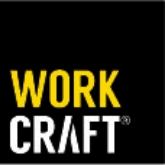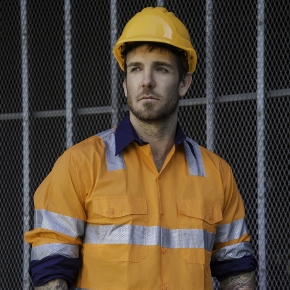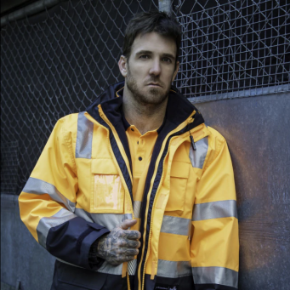Despite widespread recognition of change management’s importance in modern organisations, many leaders struggle to effectively implement transformational initiatives due to inadequate resources, capabilities and outdated methodologies.
A better way that forward-thinking leaders are achieving success is by adopting people-centric approaches that prioritise empathy and flexible planning over rigid frameworks and misconceptions about change resistance, according to an expert in the area.“For most organisations, the intent to ‘do change right’ is often present, but the processes, tools, capability and most important of all, capacity, are often lacking,” said Gilbert Kruidenier, managing director of Kruidenier Consulting.
“Leaders in most organisations I know are quick to agree that change is constant and should be a priority. In practice, it is often still an afterthought, line item on the project budget or a side-project that some poor office manager, quality person or communications manager gets voluntold to get sorted. It never ends well,” said Kruidenier, who has 20 years of experience in retail, education, and government, focusing on change management.
Change in modern-day workplaces is often complex, with unknown solutions for new problems that take time to figure out and resolve, added Kruidenier, who was speaking ahead of the AIHS National Health & Safety Conference, which will be held from 2-4 June 2025 at The Star Gold Coast.
“While it’s hard work, it doesn’t have to be hard. With the right mix of empathy, time, vision and planning, people-centric leaders are getting good results. They are the ones who finally stopped listening to people trying to sell them on myths like ‘70 per cent of change fails,’ ‘people hate change,’ and/or change needs a detailed plan.’
“None of that is true, but this is still what’s taught at prestigious business schools today, so you can hardly blame time-starved, stressed-out leaders for taking what they’re told and applying it – and then get frustrated with their teams (who are just trying to do their jobs) when it doesn’t work and they run out of time. It’s a bad experience for everyone involved.”
Still, Kruidenier noted there is a “long list of things” that can prevent change from delivering on expectations. The most common challenges are uncoordinated change that competes for resources and priority, underestimating the key role of communication, too much change at once, lack of leadership support throughout the change, starting too late with an under-resourced team, lack of data and/or analysis on the change; and not involving impacted staff early, creating a self-fulfilling adverse reaction to change across the organisation.
“In my experience, 90 per cent of all problems with change come down to three major causes: a leader(ship team) unwilling to prioritise and ending up trying to do too much at once; poor communication that leads to unpleasant surprises and confusion; and lack of preparation that fails to give people the skills and knowledge to succeed,” he said.
“All of these are 100 per cent avoidable and can be planned in advance. I’ve seen it dozens of times during strategic planning workshops; the solution is always in the room. Organisations are full of smart people who know what works and what doesn’t, but when it comes to change, we don’t involve them, because they might get upset.
“Well, they might, and maybe they have a good reason to, that doesn’t mean they will not help to get things done. If the plan makes sense and they are given some time to process what it means for them, the vast majority will get on board.”
There are significant implications in this from a WHS perspective, according to Kruidenier, who said that the psychosocial impacts of poor change management are very real, and these can lead to stress, fatigue, workplace accidents, physical and psychological harm to self and others – and worse.
“The hope among change practitioners is that now that there’s legislation that identifies change as a factor in psychosocial, with penalties and legal consequences, perhaps organisations will become more invested in creating better change experiences. So far, there is little evidence to support this hope, but to be fair, this is also a big change to how people are taught how to think about change and will take time to find its way to every day good practices,” he said.
Change is fundamentally a “people matter”, but Kruidenier said it is important to stop and think what this really means. “I like to keep things simple, because simple works best when times get tough. Three simple rules; do not lie; do no harm; and have a plan. People believe change they can see, so walk the talk and show them what the new ways of working look like,” he said.
“It doesn’t have to all be great and wonderful, you’ve hired professionals, not children, they understand the realities of life. Keep them involved, informed and deliver on promises. These things build trust, when there’s trust people feel safe and when they will safe, they can get involved.
“We’ve all heard stories of aeroplanes that went down because flight crews didn’t dare to speak up to the captain, or patients who died in theatre because a surgeon was unreceptive to input, and a frightening number of businesses go under each year because people do not feel safe to speak up.
“I understand it’s not easy to connect all the individual dots from the boardroom to the shop floor and identify where things started to go wrong, but I am willing to bet a lifetime supply of vegan chocolate chip cookies that a lack of psychological safety was at the root of it.”
For WHS professionals involved in change processes, Kruidenier said there are five important steps they can take:
- Challenge the change process. Speak up if the approach doesn’t make sense, or if there’s too much happening and offer alternatives. You now even have the law on your side and in my experience the first person with a solid actionable plan for change gets heard. Just keep in mind that just because you came up with the plan, that doesn’t mean you have to execute it, you probably already have a job you like to do well.
- Start small and suggest a light-touch approach to change. Start with a simple framework and some basic tools that fit the organisation’s capability and it will quickly become clear that if doesn’t have to cost millions to create a safe and change-ready workplace.
- Use data to tell a story, don’t tell them, show them. Find or create data and metrics that speak the language of your leadership team. HR, finance and quality could be good places to start. A leader’s everyday reality is risks, spreadsheets and budgets, so translate the change into something they can understand, show them the impact of doing it right and the consequences of getting it wrong.
- Be a genuine agent of change, by leading by example in your space. No need to become a cheerleader. I always advise (informal) leaders to talk about the up- and downsides of the change, because that’s how staff think about change too. Spelling out and acknowledging their change experience builds trust and confidence.
- Learn about change as a process. A little bit of (shared) knowledge goes a very long way, especially if your organisation is just starting to get serious about doing change right. Read a few blogs, watch some videos or listen to podcasts to find out what modern day change is all about. There is so much good and free content out there you’ll have plenty of learning options. And make sure to share the good ones with your fellow change agents and before you know it, you’ll have a coalition of change that can support any type of organisational change.
Kruidenier will be speaking at the AIHS National Health & Safety Conference, which will be held from 2-4 June 2025 at The Star Gold Coast in Queensland. This year’s conference program focuses on collaboration, innovation, and practical solutions to build safer, more resilient workplaces and prepare for the future of safety. For more information please visit the event website.













































































